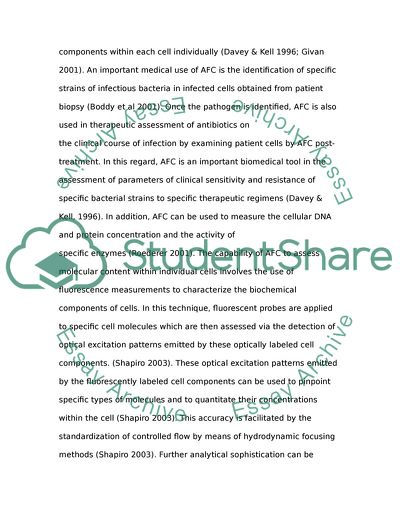Cite this document
(Biomedical Uses of Biotechnology: Flow Cytometry and Gel Term Paper - 1, n.d.)
Biomedical Uses of Biotechnology: Flow Cytometry and Gel Term Paper - 1. Retrieved from https://studentshare.org/health-sciences-medicine/1747780-two-techniqyes-in-hospitals-laboratory
Biomedical Uses of Biotechnology: Flow Cytometry and Gel Term Paper - 1. Retrieved from https://studentshare.org/health-sciences-medicine/1747780-two-techniqyes-in-hospitals-laboratory
(Biomedical Uses of Biotechnology: Flow Cytometry and Gel Term Paper - 1)
Biomedical Uses of Biotechnology: Flow Cytometry and Gel Term Paper - 1. https://studentshare.org/health-sciences-medicine/1747780-two-techniqyes-in-hospitals-laboratory.
Biomedical Uses of Biotechnology: Flow Cytometry and Gel Term Paper - 1. https://studentshare.org/health-sciences-medicine/1747780-two-techniqyes-in-hospitals-laboratory.
“Biomedical Uses of Biotechnology: Flow Cytometry and Gel Term Paper - 1”. https://studentshare.org/health-sciences-medicine/1747780-two-techniqyes-in-hospitals-laboratory.


